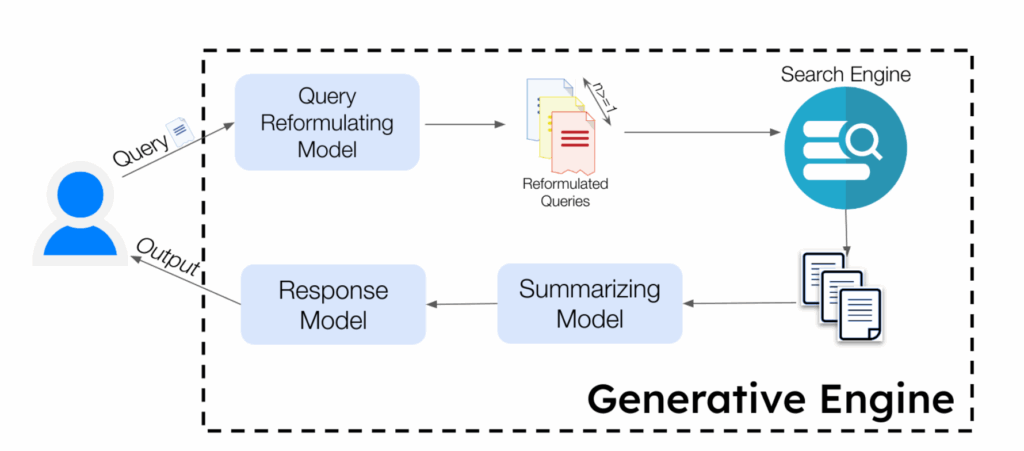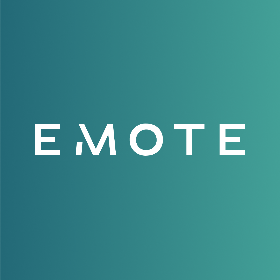
What is a GEO Agency? The Top 6 GEO Agencies Leading AI Optimization
How much has AI really changed the marketing and agency industry in the past five years?
The answer: completely.
From all kinds of creative production to audience targeting, digital marketing agencies worldwide redefined (no doubt) their operating models around AI-first systems. So much so that some of them recreated themselves as an AI agency.
This transformation did more than change workflows. It’s changed the very economics of agency growth. OpenText reported that agencies embracing end-to-end AI orchestration achieved 1.6× higher shareholder returns and 1.5× faster revenue growth than their non-AI peers.
Not just agencies themselves, but the relationship between agencies and businesses also transformed drastically.
According to McKinsey’s Superagency in the Workplace (2025), 92% of companies plan to increase their AI investments over the next three years, yet only 1% of organizations say they’ve reached full AI maturity. That gap between intent and execution creates a massive opportunity for agencies that know how to operationalize AI at scale.
Investment in AI has also reached significant levels. So much so that, in 2024 alone, global corporate spending on AI surpassed $150 billion, with projections estimating it will exceed $300 billion by 2027. Much of this investment has gone toward marketing and customer experience systems; precisely the area agencies dominate.
Traditional-firm tech spending1
Digital-native tech spending1
1 All company examples anonymized.
Source: Company 2024 10-Ks, GlobalData
The pursuit of these gains transitioned from simple artificial intelligence adoption to a focus on maximizing AI’s creative and operational output. This next phase, Generative AI Optimization (GEO), became essential.
GEO actually involves fine-tuning large language and multimodal models for agency-specific tasks, from brand voice consistency and rapid ideation to high-fidelity, production-ready asset generation.
By treating the AI itself as a system to be continuously optimized, marketing professionals & brand owners moved beyond integrating AI-powered tools.
According to verbit.AI:
Over 40% of AI professionals are currently exploring ways to optimize generative AI outputs.
It’s not surprising, considering that Perplexity AI alone received more than 155 million visits in March 2025; we haven’t even mentioned other AI platforms.
With the rise of generative AI, all types of agencies now implement technologies capable of producing original concepts. They use multimodal systems that integrate text, images, and data generation. That gives rise to new types of service models like AI marketing agencies, generative content studios, and, of course, GEO agencies.
In that blog, we will look closer at GEO agencies and generative engine optimization.
What’s Inside
What is Generative Engine Optimization? SEO to GEO
As you already know, for nearly three decades, SEO has defined how brands reach audiences via search engines. And, digital marketing success depended on how well marketers could align content with the algorithms of search engines like Google or Bing.
But a new player has entered the field: Generative Engine Optimization.
AI-powered systems retrieve information while synthesizing and summarizing it. These engines, such as Google’s SGE (Search Generative Experience), Microsoft Copilot, and Perplexity.ai, answer user queries directly, without displaying traditional search results.
This evolution has profound implications. Research titled GEO: Generative Engine Optimization explains:
Generative engines typically satisfy queries by synthesizing information from multiple sources and summarizing them using large language models.
They picture the idea as follows:

So, in this model, traditional web ranking is replaced by content visibility within AI-generated summaries.
The challenge? Brands and marketers have limited control over how, or even if, their work appears in these generative answers. To address that, GEO aimed at improving visibility and attribution in generative search results.
For a query “Things to do in NY,” generative engines work like that:

Source: https://arxiv.org/pdf/2311.09735
According to the same study, optimized content can boost visibility by up to 40% within generative responses.
In other words, the future of discoverability lies in being the source behind the answer. That’s where generative engine optimization agencies come on the scene.
Let’s finish that section with a quick SEO & GEO comparison:
COMPARING DISCOVERY
OPTIMIZATION
SEO vs. GEO: Traditional Search vs. Generative AI Visibility
🔍 SEO
- ▣ Focuses on search engine crawlers and index ranking.
- ▣ Goal: Appear on the first page of results (SERP).
- ▣ Relies on keyword density, backlinks, and meta tags.
- ▣ Optimized for human click-through behavior.
- ▣ Measures success in SERP position (Search Engine Results Page).
🧠 GEO
(Generative Engine Optimization)
- ◆ Focuses on generative engines (LLMs) that synthesize and summarize.
- ◆ Goal: Be cited, quoted, or sourced in the AI-generated answer.
- ◆ Relies on structured data, verified citations, and entity context.
- ◆ Optimized for machine comprehension and source attribution.
- ◆ Measures success in AI visibility and inclusion rate.
Who helps brands stay visible in AI-driven discovery?
Even though all AI agency types do a great job in that area, that’s precisely the role of a GEO agency.
They are a new class of marketing partner built for the era of generative engine optimization. Let’s focus on their services to find out more about new-age agencies.
While the specific approach may vary, the GEO service pillars that agencies deliver are:
🦾AI Visibility Auditing
A GEO agency assesses where the content currently appears within AI-generated outputs. This includes scanning ChatGPT, Perplexity, and other generative search engines to determine:
- How often a brand or product is cited.
- Whether AI engines reference official materials.
- How accurately they represent data or brand messaging.
To understand visibility auditing more deeply, AI researchers are recommending using “visibility metrics” such as:
- AI Citation Frequency (AICF): How often the content is cited.
- Brand Representation Accuracy (BRA): How correctly AI systems describe the brand, product, or service.
- AI Response Share (AIRS): What’s the percentage of generative answers where the brand/service/product appears.
🦾Content Architecture
GEO agencies re-engineer content so that AI models can parse meaning, verify context, and attribute sources. This involves:
- Applying schema markup that defines relationships between entities.
- Creating semantic layers that highlight brand authority within structured data.
- Building content knowledge graphs that link key topics, products, and claims.
🦾Generative Content Engineering
Similar to content architecture, GEO agencies re-create content to craft AI-readable content using Natural Language Understanding (NLU) frameworks, Named Entity Recognition (NER) optimization, and cross-modal embeddings that link images, video, and text.
In that way, these agencies balance tone, clarity, and factual accuracy so models see the brand as a trustworthy source.
🦾Source Verification and Citation Engineering
One of the GEO agency’s most important functions is to ensure attribution. Generative engines synthesize data from multiple sources, but they often misattribute or omit citations. A GEO agency prevents that by:
- Embedding verifiable metadata and canonical links.
- Getting content through just authoritative & crawlable channels.
- Creating reference datasets and fact layers AI models can pull from.
🦾Continuous AI Monitoring & Optimization
Unlike static SEO audits, GEO is dynamic. As AI models update, GEO agencies use real-time tracking tools to monitor these shifts. They analyze:
- How AI engines are changing their training data or sources.
- Which of the content assets remain cited or get dropped.
- Develop new generative patterns that may favor competitors.
Why GEO Agencies Matter Right Now
As we’ve mentioned so far, generative engines have become the new gatekeepers of online discovery for each industry.
When AI engines summarize industries, they choose which sources define the narrative. GEO agencies make sure the brand, product, or service is one of them.
So, without GEO, brands may be invisible in that ecosystem.
According to Otterly.AI’s Generative Engine Optimization Guide:
Traditional search results, characterized by blue links, are becoming obsolete. To stay relevant, your brand must be prominently featured in AI responses through text, links, branded content, quotes, statistics, videos, and more.
In the same guide, it is explained why AI search is more relevant than LLMs as follows:
So, partnering with a GEO agency offers future-proofed search visibility in a market bursting with AI-driven search behavior. If we are all on the same page, let’s discover some GEO agencies.
Top GEO Agencies
Many agencies operating today do not explicitly label themselves as GEO agencies. These agencies do the same, yet when we examine their marketing strategies and service offerings, it becomes evident that they are effectively providing GEO-like services.
They focus on optimizing content to improve visibility in AI-generated answers and recommendation engines, even if they do not specifically use the term “GEO”.
Let’s see them.
1. SmartSites
SmartSites provides services that align closely with the core principles of Generative Engine Optimization, even though the agency does not explicitly label itself as a GEO provider.
Their recent initiatives use machine learning models to forecast how search algorithms (and now generative engines) prioritize content.
The agency has begun developing structured-content pipelines that improve how brand data is interpreted by AI systems. For example, SmartSites’ enterprise SEO teams are now integrating schema-level data enrichment and contextual linking frameworks, both core to Generative Engine Optimization services.
This makes SmartSites one of the best GEO agencies currently helping U.S. brands maintain visibility within generative answers and summaries.
2. eDesign Interactive
eDesign Interactive is actively blending creative storytelling with AI-powered content frameworks, both in the United States and Europe.
Think of the agency as a team that really gets how to connect with people online. Their approach blends smart strategy with creative design, making sure a brand’s story comes through loud and clear.
The DAN-member agency focuses on user engagement and uses smart tools to customize what visitors see, which is exactly what you need to stand out in today’s AI-driven search landscape. What’s more, their latest brand experience projects include dynamic content modeling and entity tagging, two foundational elements of GEO.
So, even though they might not call themselves a GEO agency outright, they become a leading GEO agency in AI ecosystems.
3. Damteq
Damteq emphasizes growth marketing automation and data-driven UX within its inbound marketing programs
While the UK-based agency has not formally announced a Generative Engine Optimization practice, its focus on automated analytics, performance tracking, and structured content systems aligns with the foundational methods GEO agencies use. That means preparing brands for visibility across both traditional and AI channels.
Their clients already benefit from improved content discoverability across conversational and AI-assistant channels, marking Damteq as a top AI optimization agency in the UK marketing world.
4. Emote Digital
Emote Digital embraces generative AI in performance marketing to create ad copy, automate customer insights, and test with AI-based search simulations. These stimulate how content appears inside generative engines.
While the Australia-based agency has not publicly announced a generative engine optimization package or offering, its work with AI-enhanced ad testing and personalized content delivery positions it well to adopt the GEO technique.
In other words, the Australia-based agency optimizes creative assets for visibility and relevance across both traditional search and emerging AI-powered discovery environments.
5. Mimosa Agency
Mimosa Agency has positioned itself at the intersection of brand strategy and generative design, with a strong focus on authentic, culturally aware storytelling across European markets (Germany mostly.)
Although the DAN-member agency has not formally announced a GEO service, its expertise in multilingual content and data-informed brand communication positions it well to adopt GEO-aligned methods in the future. Especially for clients seeking accurate, culturally nuanced representation in AI-driven and generative environments.
6. CreativeWeb
CreativeWeb, a Poland-based member of the Digital Agency Network, is known for its deep technical expertise in web development, UX design, and SEO-focused architecture.
The agency’s emphasis on semantic HTML, accessibility, and structured data implementation already aligns with the technical foundations required for generative engine optimization.
While CreativeWeb has not publicly announced dedicated GEO services, its approach to structured, search-friendly web design makes it well-prepared to evolve into a generative SEO agency.
One capable of building websites that remain discoverable and credible within AI-driven search and generative engines.
Why Should You Work with a GEO Agency?
Repeating one more time, the way people discover brands online is changing faster than ever. Across multiple studies, researchers confirmed that ChatGPT, Perplexity, Gemini, and Google’s SGE generate synthesized answers, often quoting or referencing only a few trusted sources.
So, if your brand & service aren’t optimized for inclusion in those AI summaries, you risk losing relevance, awareness, and referral traffic.
A GEO agency specializes in preventing that loss.
That kind of agency restructures the content and metadata into an “AI visibility layer” by embedding schema markup, semantic HTML, and verified citations. This move ensures the asset is compatible with how large language models (LLMs) retrieve and reuse content.
What’s more? See why you need to work with a GEO agency:
Generative Engine Optimization (GEO) Agency Services
Key Benefits, Activities, and Goals for AI Visibility
| Benefit/Service | Key Activities & Methodology | Goal/Result |
|---|---|---|
| Recover Lost Visibility | GEO agencies use structured data, schema markup, and entity mapping to help your brand remain visible when AI engines summarize content. | Optimized sources can gain **30–40% higher citation visibility** in generative responses. |
| Build Trust and Authority in AI Search | GEO professionals ensure your content earns authority through Wikipedia listings, reputable news mentions, and verified citations. | Directly improving how your brand **appears in AI answers**. |
| Understand and Monitor AI Visibility | Agencies leverage AI visibility tools (like OtterlyAI x SEMrush) to track where and how your brand is mentioned in AI search and monitor citation sources. | Identify **emerging opportunities** for improvement. |
| Future-Proof Your Content Strategy | GEO agencies help you restructure owned content (website, blogs, resources) to be machine-readable and semantically rich, creating an **“AI-ready architecture.”** | Ensures LLMs can consistently interpret and credit your information even as search models evolve. |
| Unlock Data-Driven Growth | By understanding how generative systems surface and rank sources, GEO experts can align marketing analytics, PR, and content creation with AI ranking logic. | Bridging technical optimization and brand storytelling for the **new era of discovery**. |
FAQ about GEO Agencies
1. What is a GEO agency?
A GEO agency helps brands be cited and accurately represented within AI-generated responses in LLMs rather than traditional search results on Google. These agencies make content readable and trustworthy to generative engines such as Gemini, ChatGPT, Perplexity.ai and more. As defined in OtterlyAI’s Generative Engine Optimization Guide (2025), GEO agencies “make content discoverable, citable, and contextually accurate inside AI outputs.” Their purpose is to ensure that when AI summarizes the industry or product, the brand is one of the trusted sources it uses.
2. How does GEO differ from traditional SEO?
As you already know, traditional SEO aims to rank content higher in search results for “real humans,” while GEO optimizes content for generative engines for citation. Instead of keywords and backlinks, GEO focuses on making content interpretable by large language models. As is known, generative engines synthesize information rather than rank it; that means brands must be part of what AI models summarize, not just what they index. In short, SEO gets the content seen by people; GEO gets it understood by machines.
3. What are the main services a GEO agency provides?
A generative engine optimization agency delivers technical, analytical, and creative services that make brands visible in AI-driven discovery. This includes AI visibility audits, structured data and schema optimization, generative content engineering, citation and attribution management, and real-time AI monitoring.
4. How to choose the right GEO agency for your business?
The best GEO agencies combine AI literacy, structured data expertise, and ethical marketing practices. Studies show us that brands that work with AI-proficient partners see nearly 2× faster implementation and 1.9× higher marketing ROI. When evaluating a GEO agency, looking for proven AI search experience, schema and metadata implementation, transparent reporting metrics (AI inclusion rate, citation frequency), and alignment with ethical frameworks is a good call.
5. What KPIs should you track for GEO performance?
Because GEO targets AI systems, its metrics differ from SEO. Key KPIs for GEO performance include AI Citation Frequency (AICF), Brand Representation Accuracy (BRA), AI Inclusion Rate (AIR), and Visibility Retention Rate (VRR). These indicators measure how often the brand & content are cited in AI-generated answers and how accurately they are represented.
6. How long does it take to see results from GEO optimization?
GEO optimization produces measurable results within 8 to 16 weeks, with full visibility gains typically seen after six months. Otterly.AI’s 2025 benchmark study found that optimized content increases inclusion in AI-generated summaries by 35–40% within this period while Princeton’s research showed similar improvements in generative citation frequency.
7. Can traditional SEO agencies offer GEO services?
Traditional SEO agencies can transition into GEO providers, but doing so requires more than adding AI tools, no doubt. It demands model-level understanding and structured data fluency. As marketers already know, working with generative engines is beyond optimizing for algorithms; it’s about collaborating with intelligent systems. In other words, implementing AI for SEO is not GEO.






















